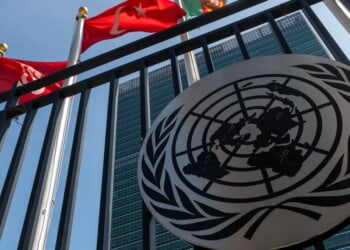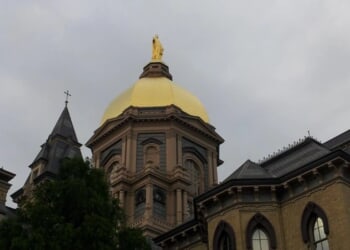Washington, D.C. Newsroom, Oct 16, 2025 /
14:11 pm
The number of young Americans who self-identify as transgender or nonheterosexual declined in 2024 and 2025, according to a report from the Centre for Heterodox Social Science (CHSS), which compiled data from undergraduate student surveys and broader surveys of young people.
The Oct. 10 report, titled “The Decline of Trans and Queer Identity Among Young Americans,” found an overall decline in people who identify with the broader “LGBTQ+” community, with a bulk of the decline in those who identify as bisexual, transgender, and queer.
Eric Kaufmann, director of CHSS and a politics professor at the University of Buckingham, led the study.
The report noted a surge in young people identifying with those segments in the 2010s and the 2020s, which peaked in 2023. Since then, the report concluded that “trans, queer, and bisexual identities are in rapid decline among young educated Americans.”
It found that the number of young people identifying as “nonbinary” — neither male nor female — dropped significantly in three of five data sources reviewed in the report. Both of the other surveys, however, showed stability in “nonbinary” identification.
According to the report, the Andover Phillips Academy survey saw the total number of students identifying as “nonbinary” drop from 9% to 3% from 2023 to 2025. A much larger sample from the Foundation for Individual Rights and Expression (FIRE) saw a decline from 6.8% to 3.6% in the same time period. The Brown University student survey showed a drop from 5% to 2.6%.
The other data sources — the Higher Education Research Institute (HERI) and the Cooperative Election Study (CCES) — alternatively found “nonbinary” identification to be stable.
According to the report, the number of students identifying as “gay” and “lesbian” was stable in the time period measured, but researchers found a decrease in other nonheterosexual identification, such as “questioning,” “asexual,” “pansexual,” and “other.”
The report noted the Andover survey showed nonheterosexual identification peak in 2023, when 63.5% of the student body identified as heterosexual.
In that survey, identification as bisexual peaked in 2023 at 17% of the student body and decreased to 12% by 2025. “Queer” and “other” identifications also peaked in 2023 to 17%, dropped to 9% in 2024, and went back up to 12% in 2025.
According to the FIRE data, identification as heterosexual was at 68% in 2023 and increased to 77% in 2025, with strong decreases in the “queer” and “other” categories of sexual orientation.
The HERI data showed heterosexual identification drop to 77% in 2023 and increase to 82% in 2024, which is the most recent year data is available. The Brown survey found that heterosexual identification reached its low point of 60% in its 2022-2023 data and increased to 68% in fall 2025.
The General Social Survey saw heterosexual identification drop to its low point of 71% in 2022 and rise to 81% in 2024. The CCES survey alternatively showed a stable increase in nonheterosexual identification through 2024.
“To the extent that the youngest represent the leading edge of new trends, this suggests that trans, bisexual, and queer identities are declining in popularity with each new cohort,” the report noted.
The report concluded the decline is not likely related to political, cultural, or religious beliefs, but suggested a correlation with improved mental health, which “appears to be part of the explanation for the decline of BTQ+ identification.”
“Only time will tell if the substantial decline of BTQ+ identification will continue among young Americans,” the report’s conclusion read. “If so, this represents a momentous and unanticipated post-progressive cultural shift in American society.”
(Story continues below)
Subscribe to our daily newsletter
Mary Rice Hasson, director of the Person and Identity Project at the Ethics and Public Policy Center, told CNA the research “is interesting and somewhat encouraging, but I wouldn’t pop the champagne corks and celebrate a victory yet.”
Data from the Centers for Disease Control and Prevention showed a “troubling rise” in transgender identification among high schoolers, Hasson said.
“Even with a possible decrease, young Americans are still self-identifying as ‘trans’ in radically higher numbers than in past generations, when only a fraction of a fraction of a percent self-identified as ‘trans,’” she added.
Even with the decrease in nonheterosexuality among college students, Hasson said “the ‘improvement’ still leaves nearly a quarter of our youngest generation as self-identified ‘nonheterosexuals’ … which means they reject the nature and truth of the body and human sexuality.”
“The overall concern remains — too many young people do not know the truth of ‘who they are’ and don’t accept the sexual identity God has given to them,” Hasson added. “So, it doesn’t change the work we do — we continue to pray and speak the truth, to reach those who are lost and searching for the truth and love that only God can give.”


















